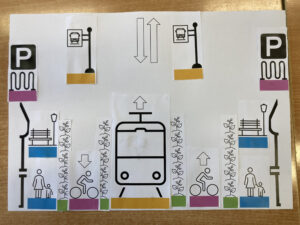Electric bus fleets are increasingly a go-to sustainable solution for climate conscious cities, offering better air quality and less noise pollution. Without efficient e-bus fleet management, however, local authorities making the switch from diesel-powered vehicles can face complications related to range and charging times as well as additional factors affecting battery performance.
Facing these challenges, the EIT Urban Mobility-supported project IMPULSE (which stands for: Integrated management of e-buses power utilisation to lead sustainability and electrification) project is levelling up the stability and predictability of cities’ e-bus fleets and reducing operational costs.
“It was a game-changer,” stressed Joana Cunha from bus and tram operator CARRIS in Lisbon, one of two recent IMPULSE pilot locations along with Kadıköy in Istanbul.
“For the control centre it was a relief, basically. When we introduced them to the platform they said, ‘Yeah, this is exactly what we needed’.”
Delivering real change with IMPULSE
Hailed as a user-friendly platform, IMPULSE helped achieve impressive service improvements, including a 30% decrease on lost vehicle kilometres for two of Lisbon’s largely electrified lines, as well as a 24% reduction in failures in an older generation e-bus fleet.
IMPULSE’s wealth of features supports more informed decision making by integrating real-time data from multiple sources and utilises predictive AI algorithms. These actionable insights enable cities to get maximum value from their fleets by giving operators visibility on everything from battery status to energy consumption and range prediction.
Access to this information helps prevent inefficiencies, like e-buses returning to charge prematurely when they still have the capacity to continue serving passengers reliably.
“We can tell you already at the beginning of the day, based on their planning, whether they will have to intervene during the day or not. This could help them to make adjustments, swap out vehicles, or try to find a moment to charge the vehicles,” explained Balázs Füzesi from Hungarian software development company realCity ITS, part of the IMPULSE consortium.
The solution has also helped CARRIS navigate planning challenges tied to operating a mix of older and newer e-bus fleets, each with varying capacities and levels of autonomy.
“The direct output for the clients, the passengers, is avoiding interruptions of service because of low battery. That was a real change, that we were able to avoid suppressing services,” Cunha reported.
As part of the pilot in Lisbon, Portugal, realCity deployed a portable onboard unit to assist drivers with navigation and offer real-time data to the dispatcher system. CARRIS also benefited from realCity’s web-based fleet management system for monitoring vehicle and driver activity. The ability to analyse and visualise historical data with charts, statistics and reports to reveal underlying causes of transport issues was another valuable feature for the operator.

In the Kadıköy, Türkiye pilot, IMPULSE demonstrated its scalability and adaptability for cities with different transport infrastructure capabilities. With automatic data collection not a technical possibility on site, realCity quickly came up with an interface for drivers to manually enter operational data into the on-board unit. That data was then combined with real-time bus positions and timetable data to get the pilot up and running.
New ideas, new technologies
The success of the pilots in Portugal and Türkiye underlines the advantages for sustainable mobility from innovative collaboration between cites and innovative companies. “It was a great win-win situation,” Füzesi highlighted.
For example, the realCity team was able to get direct on-the-ground feedback from drivers in Kadıköy about different facets of the solution and their user experiences. Expertise from Barcelona-based mobility innovation research hub CARNET, which played a key role in bringing the different players together, was also invaluable.
“Without local partners or local interest, it’s going uphill, so it’s not easy,” Füzesi pointed out. “You could be brilliant in what you do, and you could have the most revolutionary product, but if you don’t have that level of experience, don’t have that level of support, then you’ll have a hard time bringing that innovation to market.”
Building on its success in Portugal and Türkiye, realCity now aims to expand its solution to new markets, including its home base of Hungary, where the company sees “a huge trend” in city-level bus fleet electrification.
“With this, we could encourage them a little more to invest into electric vehicles or at least partially electrify their fleet and use our electric bus feature set to operate more efficiently,” Füzesi noted.
For transport operator CARRIS, the Lisbon IMPULSE pilot was a chance to engage with new ideas and new technologies. “I think this is the positive added value of working with these startups, that they show us different things. realCity was proactive and very interested in knowing what we thought and our ideas for improvement. I think the whole process went really, really well,” Cunha said. “Without this type of project we probably would not have that knowledge.”




